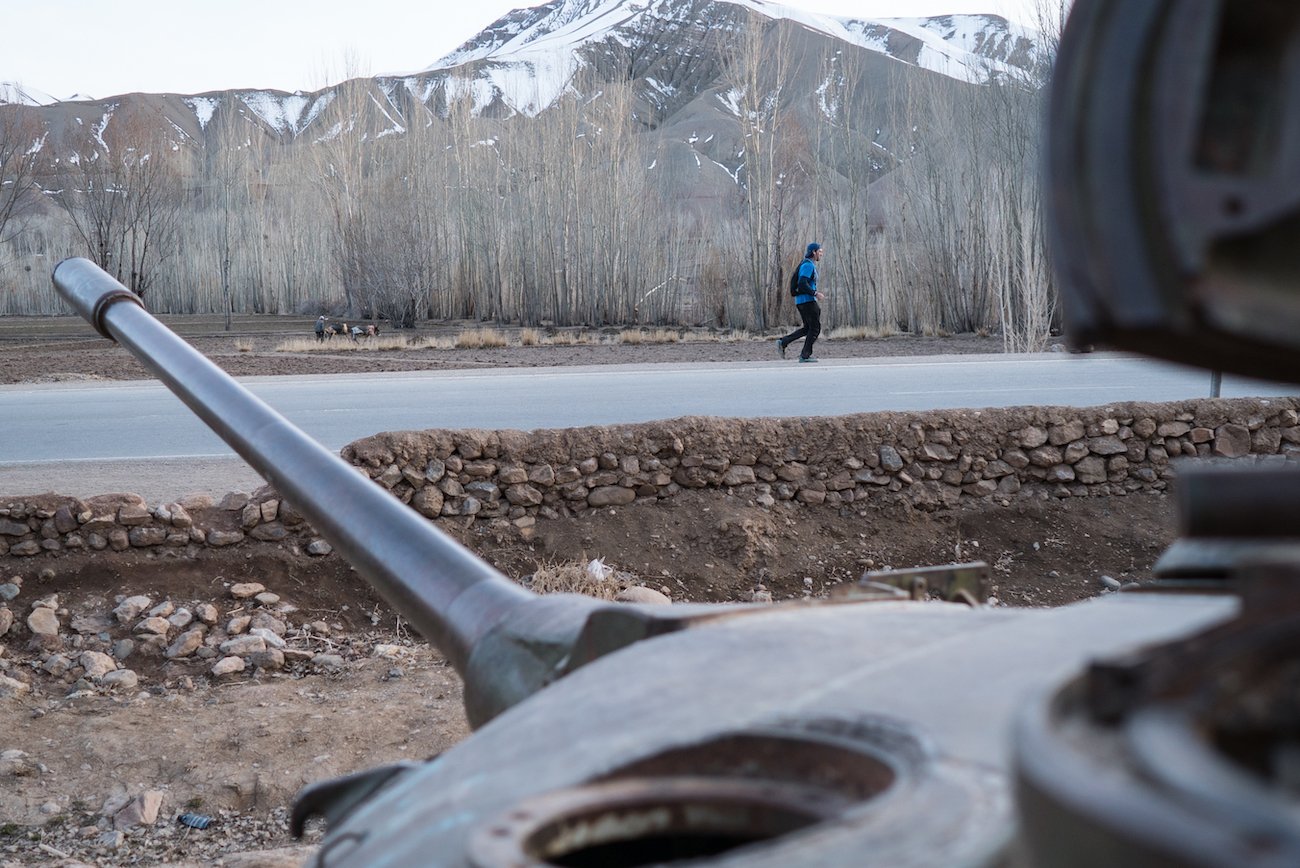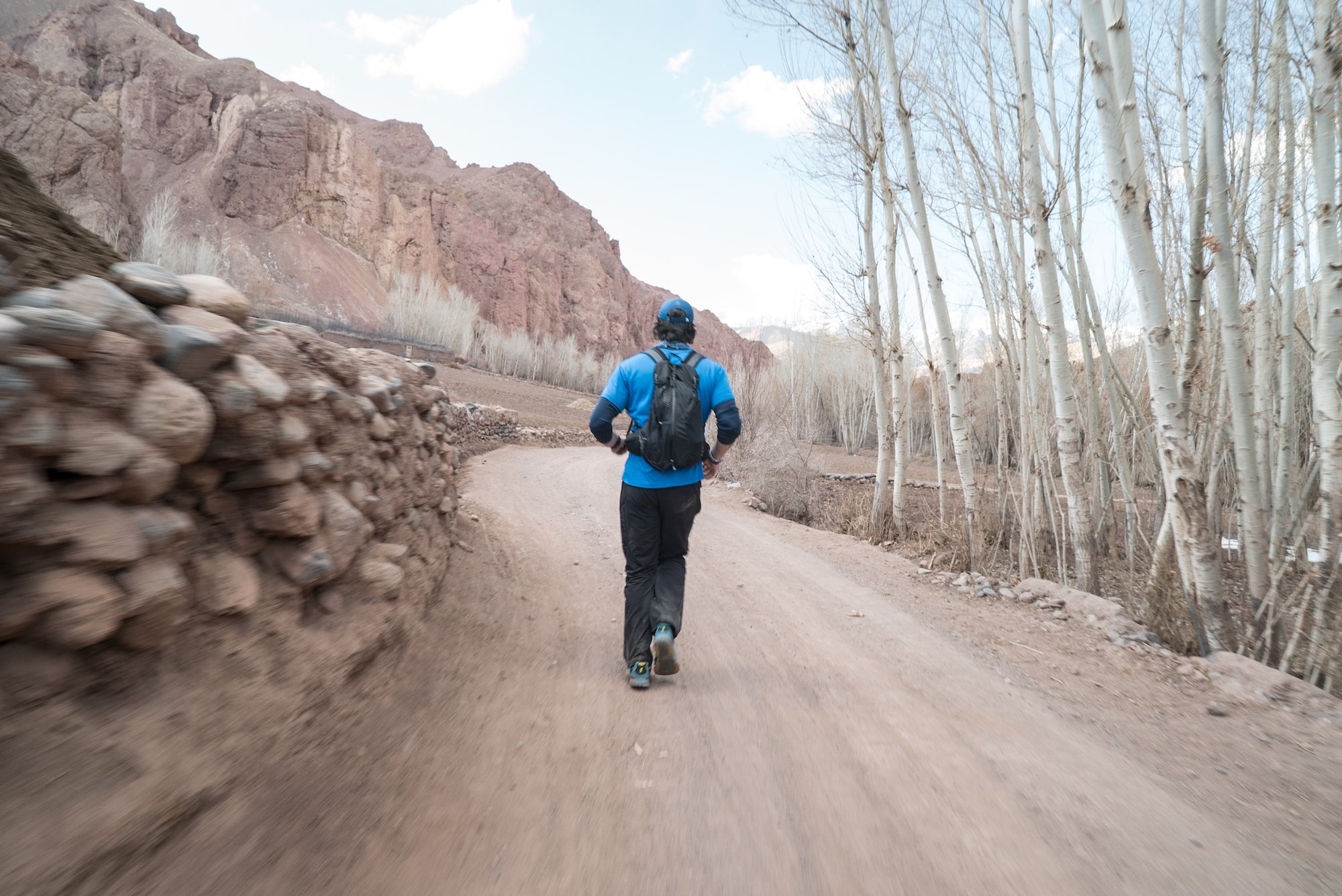A long run in the Hindu Kush: What it’s like to run a marathon in remote Afghanistan.
“‘The secret for harvesting from existence the greatest fruitfulness and the greatest enjoyment is: to live dangerously! ”
Image kindly provided by Sandro Gromen-Hayes
When you hear of Afghanistan, for most - our first thoughts are war and the armed groups. It's a sad fact that the country is generally in the news for security issues. But I know there is more to this beautiful place than just war – I’ve seen it, felt it and breathed it.
Back in March 2017, a friend and I visited Afghanistan to meet athletes redefining their future through adventure sports. These inspiring people - skiers, mountain bikers, marathon runners and parkour gymnasts, are pushing boundaries in the most dire of circumstance. Daily security issues plague the capital Kabul and it’s assessed that armed groups affect almost half the country. But there are oases of relative safety in this place. Following the athletes’ example; I sought my own challenge and decided to run a marathon in a region characterised by conflict.
An unlikely adventurer’s playground
Culturally rich, the province of Bamiyan is located c.250 Km west of Kabul on the silk route that connected China with the Middle East. Geographically protected by the Hindu Kush and Koh-i-baba mountain ranges, the region enjoys a level of tourism unlikely many others in the country. Armed groups feature heavily in the neighbouring provinces, but thanks to area’s natural mountain defences; they have a hard time getting in.
The capital town, also called Bamiyan, sits around 2500 metres above sea level and is covered in a blanket of snow for 4 months each year. Home to the world’s oldest oil paintings and a citadel once attacked by Genghis Khan in the 12th century; it is a true adventurers’ paradise. Kilometres of unclimbed peaks, pristine untouched backcountry slopes and friendly, hospitable residents beautifully complement the stunning scenery and culture.
Image kindly provided by Sandro Gromen-Hayes
Buddhas
My marathon starts at the ‘big Buddha’, a 40-metre high cave carved into the sandstone rock, where a 38-metre Buddha effigy once stood. Back in March 2001, armed groups swept through the province - destroying all non-Islamic iconography that they could find.
Running at 2500 metres elevation takes its toll on me from the outset; my heart rate is abnormally high for the speed I’m running at. Something I know will prevent me from finishing the marathon if I don't take frequent walking breaks to bring it back to a more normal rate. More concerning is the high temperatures the region endures; peaking around 26 degrees in the afternoon making it even more challenging.
War machine
Running along the roads, the scenery looks like a set from Star Wars. The communities - living in sandstone caves and small settlements – are incredibly social with children playing in the streets and adults standing around chatting.
We get to an Afghan Army checkpoint at the edge of the town and the soldiers, armed with AK47s, wave us through with bemused looks. Next to the checkpoint is a ghostly reminder of Afghanistan's history; a burnt-out soviet tank,– its barrel pointing menacingly into the mountains. We go in close to have a look: it’s all bare metal – no rubber or other material has lasted. Now it serves as a climbing frame for local kids – clambering over the turret and hanging off the barrel of this old war machine.
Image kindly provided by Sandro Gromen-Hayes
Welcome to the Hindu Kush
After the challenge of Kabul, the serene scenery sends me into a peaceful calm. But I don’t have time to enjoy it; A car speeds past us with a live goat strapped to the roof and shakes me out of my daydream; it’s well-timed and reminds me to turn off the road on to a mountain track.
Passing dozens of farmers, each stare from a distance until they judge I'm not a threat.
A respectful 'Salaam', handshake and smile let them know I'm friendly. It's common to place the right hand over your heart after you exchange greetings here - doing so, I notice smiles of appreciation from the older community whom, judging by the deep facial contours, have seen a lot in their lifetimes.
The younger generations, shouting and giggling, run alongside me. Kids of all ages walking home from the local school join in - whooping and hollering all the way. I try in vain to show off by increasing the pace - they respond by keeping up, for 5km!
As the day wears on, the track zig-zags through the communities, and we constantly pass people working the land or collecting water from the stream. The mountain air gets cooler the higher up we go, making me think of my favourite climbing peaks in Europe.
Untested assumptions
We turn a corner and meet a teenager and an old man on the track. I guess something is up by the way the motorbike is parked across the road.
'I am sorry - you cannot go any further'. Says the teen in broken English.
You are in danger'.
My heart rate spikes and my first thoughts are that it's a security issue.
I'd done my research about the province - it was free of armed groups, and considered safe. Had I missed something?
“The snow is unstable - it falls without any warning”.
I check the time – he’s right, it’s 3pm and the sun’s high in the sky. I had undergone avalanche training in the Marines but had forgotten that mid-afternoon is most dangerous, as the sun has had many hours to heat the snow making it unstable.
“Please come back tomorrow morning and my father will show you around his village”. I thank him for their kindness and feel instant appreciation that people are looking out for us – despite being strangers to their community.
Image kindly provided by Sandro Gromen-Hayes
A new threat
4 hours pass and I still have 15 kilometres to go. I continue to run as the sun goes down and the village comes alive with the sound of barking dogs and fast moving traffic. I’m now running on my own along the dark roads.
But I do have a bigger problem now; the traffic has reduced to a car passing every 10 minutes; this is nice at first, allowing me to see stars and constellations in their full glory, however it also means the local guard dogs are wandering out to the edge of the road. And they’re angry.
In my assessment of the threats, I’d missed the fact that most households keep large, and very angry dogs to protect their families. When the sun goes down, these guard dogs are let off their leash and free to roam outside the compounds – chasing anything that moves; which includes tired marathon runners trying to recall their last rabies jab!
Images kindly provided by Sandro Gromen-Hayes








